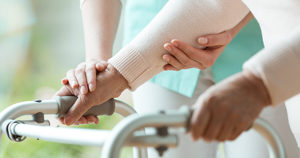 A recent report published by the Kaiser Family Foundation – “Nursing Facilities, Staffing, Residents and Facility Deficiencies, 2009 Through 2016” – provides information on recent trends in nursing facilities in the United States, drawing on data from the federal On-line Survey, Certification, and Reporting system (OSCAR) and Certification and Survey Provider Enhanced Reports (CASPER). Here are a few highlights.
A recent report published by the Kaiser Family Foundation – “Nursing Facilities, Staffing, Residents and Facility Deficiencies, 2009 Through 2016” – provides information on recent trends in nursing facilities in the United States, drawing on data from the federal On-line Survey, Certification, and Reporting system (OSCAR) and Certification and Survey Provider Enhanced Reports (CASPER). Here are a few highlights.
- Nationwide, the number of nursing facility beds has been fairly consistent since 2009, reaching 1.6 million certified beds in 2016 (with an average of 109 beds per facility). However, nursing facility occupancy rates declined slightly from 2009 to 2016, from 84 percent in 2009 to 81 percent in 2016.
- From 2009 to 2016, the share of nursing facilities that were for-profit increased slightly, from 67 percent in 2009 to 69 percent in 2016, while the share that were non-profit declined slightly, from 26 percent in 2009 to 24 percent in 2016. (The remainder – about 7 percent – were government-owned.) Ownership patterns vary widely across states, with states in the South and West having higher shares of facilities that are for-profit.
- More than half of facilities over the 2009-2016 period were owned or leased by multifacility organizations (chains that have two or more facilities), though the share of nursing facilities that are chain-owned varies by state.
- A year of nursing facility care typically costs over $82,000, and national spending on nursing facilities across all payers totaled $162.7 billion in 2016.
- Medicaid is the primary payer source for most certified nursing facility residents, with more than six in ten (62 percent) residents – about 832,000 people – having Medicaid as their primary payer in 2016. States in the East, particularly the Southeast, have higher shares of residents with Medicaid as their primary payer than other states.
- On average, in 2016, residents’ level of need for assistance with activities of daily living scored 5.8 on a scale from 3 to 9, and levels of need have been fairly stable since 2009.
- While only 4 percent of residents were bed-bound in 2016, over six in ten (65 percent) of residents depend on a wheelchair for mobility or are unable to walk without extensive or constant support from others.
- Nearly half (45 percent) of residents had a dementia diagnosis in 2016, and 32 percent had other psychiatric conditions such as schizophrenia, mood disorders or other diagnoses. In addition, nearly two-thirds (63 percent) of residents received psychoactive medications, including anti-depressants, anti-anxiety drugs, sedatives and hypnotics, and anti-psychotics, in 2016.
- In 2016, the most common deficiencies given by state surveyors concerned failures in infection control, accident environment, food sanitation, quality of care, and pharmacy consultation. Of particular concern were deficiencies that cause harm or immediate jeopardy to residents. In 2016, more than one in five facilities received a deficiency for actual harm or jeopardy.
Source: Nursing Facilities, Staffing, Residents and Facility Deficiencies, 2009 Through 2016, Kaiser Family Foundation, https://www.kff.org/medicaid/report/nursing-facilities-staffing-residents-and-facility-deficiencies-2009-through-2016/
